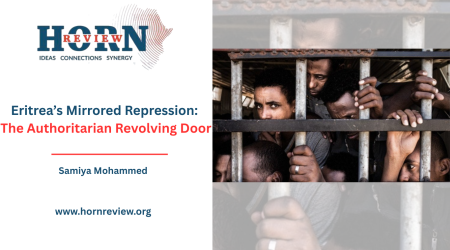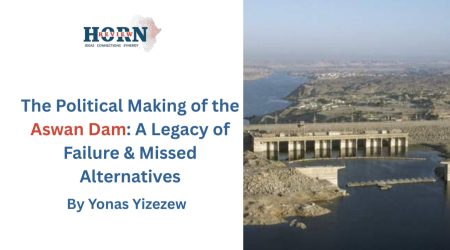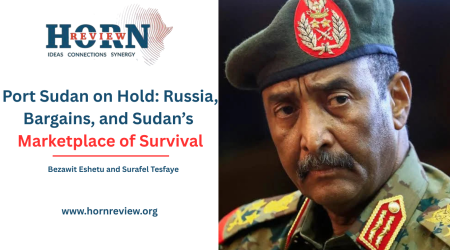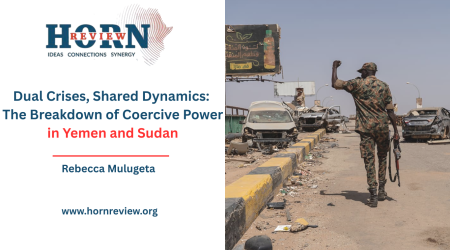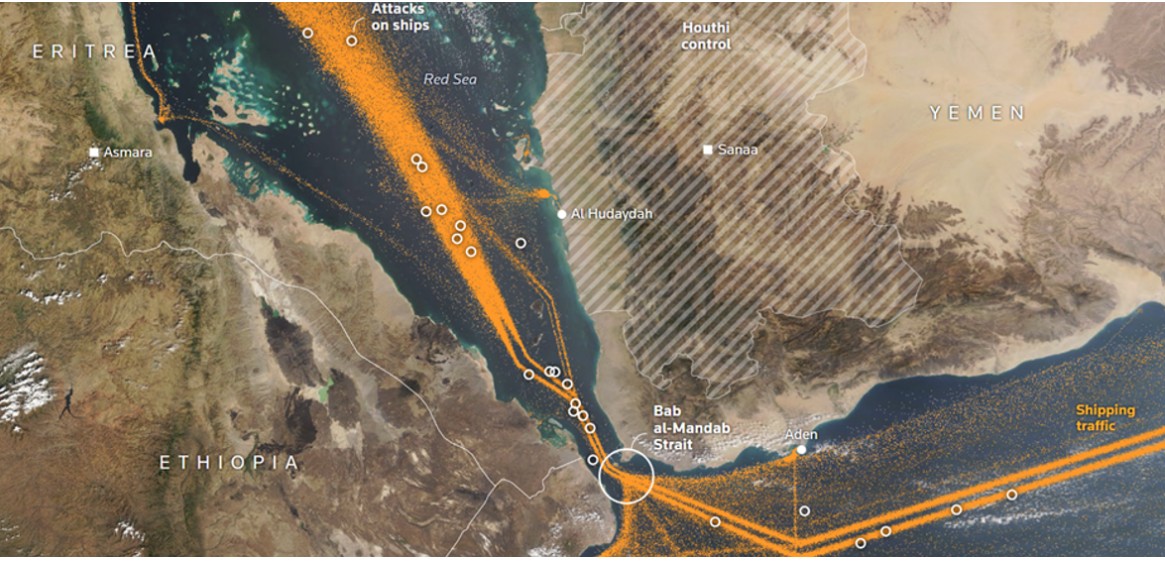
13
Jul
Integrating Disaster Risk Management in Maritime and Foreign Policy
By Nolawi M. Engdayehu
In an era of contested sea lanes and geopolitical flux, disaster risk management can no longer remain a domestic silo. This article makes the case for embedding DRM into Ethiopia’s maritime and foreign policy as a cornerstone of national and regional resilience.
Ethiopia’s landlocked geography has long defined the contours of its geopolitical posture and economic dependencies. But as maritime corridors grow increasingly volatile and regional rivalries intensify, the urgency of securing diversified sea access has sharpened. What remains underexamined is the critical nexus between maritime access, disaster risk management (DRM), and social protection—a domain that must now be elevated into a central pillar of Ethiopia’s maritime and foreign policy.
This article argues that maritime access must be understood not only through the lens of trade or diplomacy, but as a foundational component of Ethiopia’s multi-domain national resilience strategy. The country’s long-term stability, crisis response capabilities, and governance integrity depend on how effectively it mitigates external access vulnerabilities and builds system-wide interoperability across security, logistics, foreign policy, and DRM institutions.
Sea Access in a Volatile Region: A Strategic Vulnerability
Ethiopia has long relied on Djibouti for almost all of its maritime trade. While this corridor has served as a vital artery for imports and humanitarian logistics, it has created a high-risk dependency that leaves the country exposed to operational and political disruptions. The monopolistic service structure, political fragility, and infrastructure constraints associated with Djibouti expose Ethiopia to systemic shocks and asymmetric disruptions.
Recent attempts to diversify access—such as the Memorandum of Understanding with Somaliland for port use and potential naval basing in Berbera—reflect growing strategic intent. These moves, however, remain politically sensitive, legally ambiguous, and operationally underdeveloped.
Meanwhile, the Red Sea shipping corridor—an essential conduit for Ethiopia’s maritime trade—is becoming a theater of multi-domain threats. Houthi attacks on commercial vessels in the Bab el-Mandeb strait have grown in sophistication and impact, testing regional maritime security architectures and threatening freedom of navigation. These hybrid maritime disruptions, along with cyber threats and insurance volatility, directly compromise Ethiopia’s already fragile access routes.
Further east, tensions around the Strait of Hormuz and the Arabian Sea—through which a considerable portion of Ethiopia’s energy and strategic imports transit indirectly—present another external risk vector. Any escalation could paralyze national logistics and emergency supply chains, with ripple effects on food security, public health, and governance credibility.
DRM Through a strategic Security Lens
Ethiopia’s DRM landscape is complex and multi-hazard. It encompasses recurrent droughts, floods, climate-induced displacement, and conflict-driven humanitarian emergencies. What is increasingly evident is that these risks are no longer isolated or seasonal—they are systemic, trans-boundary, and increasingly shaped by external geopolitical dynamics.
The country’s over-reliance on one maritime corridor limits its ability to stage effective and stable emergency response operations, import relief commodities and fertilizer, or mobilize strategic reserves in the face of access disruptions or regional instability. During the 2022 drought and earlier COVID-19 disruptions, customs congestion and logistical bottlenecks in Djibouti delayed critical humanitarian supplies to millions. These episodes exposed a national vulnerability: the lack of contingency planning for external access disruptions.
The new DRM policy marks an important step forward, addressing many of the structural deficiencies and fragmented mandates that have constrained the sector over the past two decades. But it must go further to reframe disaster risk management not merely as a domestic preparedness tool, but as part of a strategic priority integral to Ethiopia’s Red Sea and Gulf foreign policy. Maritime risk exposure as it relates to disaster preparedness and emergency logistics must be recognized as a core policy concern—on par with food sovereignty and economic reform.
The development of strategic reserves, diversified corridors, and real-time interoperability between security, logistics, and disaster management institutions is essential to preventing cascading failures. While the new policy rightly emphasizes the pre-positioning of food and non-food items as critical platforms for resilience against natural and man-made crises, there remains a notable absence of a concrete blueprint, actionable timelines, or adequate resourcing to indicate near- or medium-term prioritization in upcoming government agendas. Failing to act on clearly identified risks could deepen fragility and delay much-needed reform.
From Exposure to Foresight: Resilience by Design
Emerging from a review of structural weaknesses, Ethiopia’s revised DRM policy proposes modernized institutional frameworks to address multi-dimensional risks. Geopolitical risk was explicitly considered in its overhaul, and the emphasis on self-reliance strengthens the case for broader institutional reform. But while integrating DRM into national governance is a feasible challenge, doing so amid shifting geopolitical alignments in the Horn and Gulf presents a more complex frontier.
Much remains siloed. Ethiopia’s national risk registers still lack dedicated modeling for maritime disruptions, supply route instability, or geopolitical volatility. This omission leaves the country unprepared for multi-domain threat scenarios where cyber attacks, embargoes, or regional conflict compound with natural disasters to overwhelm national systems.
Effective resilience depends on seamless integration among DRM systems, national security policies, and foreign policy. It requires simulation of black swan events, cross-agency coordination mechanisms, and the institutionalization of a security-governance nexus where DRM is no longer a technical afterthought but a central strategic pillar.
Ethiopia’s experience with maritime-linked DRM supply chains highlights this need. Port Sudan operations have been slowed by logistical misalignments—particularly truck axle limitations between Sudanese and Ethiopian roads; resulting in costly trans-loading and delayed response times. In contrast, Berbera-facilitated operations succeeded in delivering relief to eastern Ethiopia, reinforcing the case for diversified maritime access in both current and future disaster scenarios.
Strategic Recommendations for a Maritime-Integrated DRM Policy
1. Reframe DRM as a Core Element of Regional Policy
Elevate DRM as a formal component of Ethiopia’s resilience strategy, explicitly linking it to maritime access, logistics, and cross-border contingency planning. Expand national risk assessments to include geopolitical volatility, energy security, regional access dependencies, and cyber disruptions. Ensure agreements with Somaliland, Sudan, and Kenya are operationalized through secure corridors and regional logistics hubs.
2. Institutionalize Regional Preparedness and Simulation-Based Planning
DRM must evolve from response-driven mandates to anticipatory governance. Establish crisis simulation frameworks across customs, security, and logistics agencies. Use platforms like IGAD and the AU to promote shared humanitarian access and regional supply resilience. A regionalized DRM architecture could also foster greater policy convergence and trust in the Horn and Eastern Africa.
Resilience is a Policy Choice
It is a step in the right direction that Addis Ababa’s new DRM policy embraces a multi-hazard, national approach, recognizing the interconnected nature of risks and vulnerabilities across sectors. However, to be truly effective, it must deepen its regional orientation and integrate global shock dynamics—such as supply chain disruptions, geopolitical tensions, and pandemics—that transcend national borders.
It is increasingly evident that Ethiopia’s maritime frameworks and logistics must both inform and be informed by DRM strategies. This reciprocal relationship is essential for embedding resilience into national planning and foreign policy. Recent tensions in the Red Sea and the Strait of Hormuz underscore the urgency of developing an integrated and adaptive resilience model—one that enables governments to anticipate, absorb, and respond to crises with better coordination and foresight.
Nolawi served as a technical advisor to Ethiopia’s DRM reform taskforce, contributing to the national policy shift that integrated risk, access and reserve planning.

